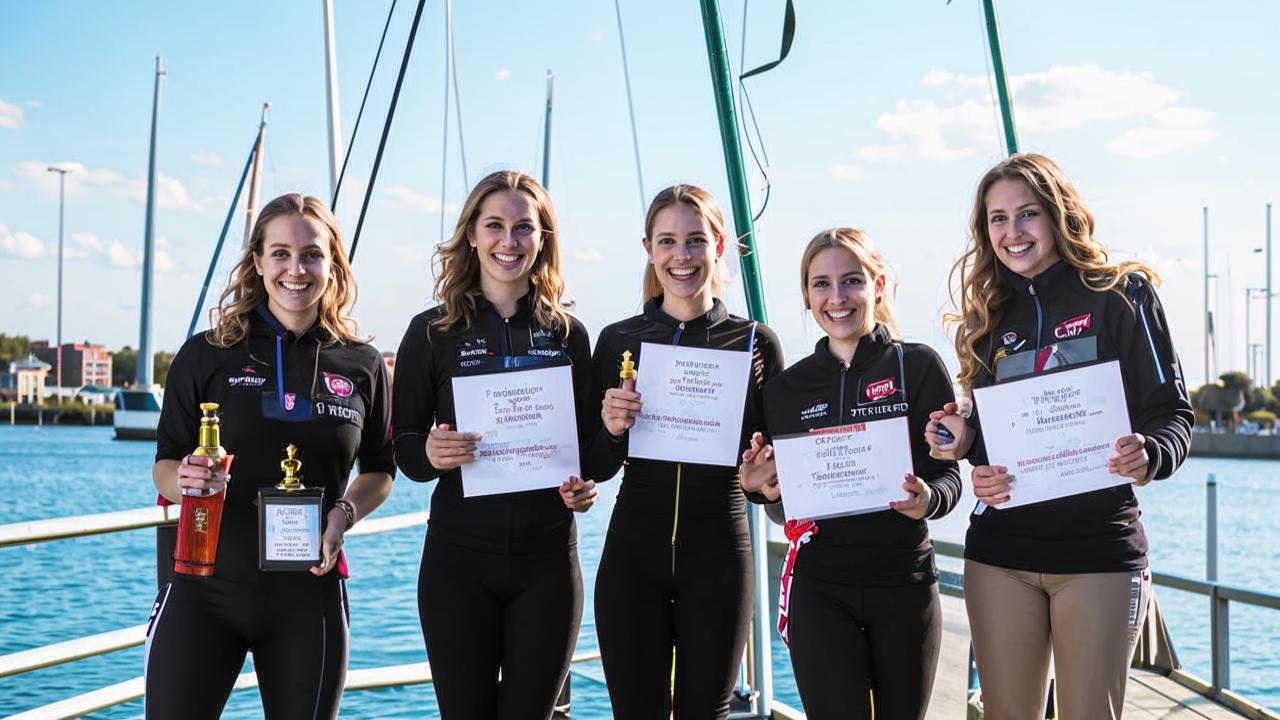The head coach of the Russian national sailing team answers.
Few people know, but sailing is not only a hobby of millionaires, but also a great way to “pump up” yourself and your body. In the water the load on the body increases many times, and at the same time calories are burned more actively. Another bonus of yachting: all muscle groups are included in the work at “full speed” – we checked! You realize it especially well when the next day you wake up feeling as if you have plowed a whole field.

Head coach of the Russian national sailing team
Sailing is useful first of all for the environment – sun, air and water are our best friends. It gives wonderful bright emotions, and hence recovery.
What is it?
Almost everyone has heard that “sailing” is an active kind of water sport. But not many people are familiar with the term “regatta”. Let us tell you: a regatta is a competition of sailing yacht crews, which consists of a series of races. Natalya Ivanova, the head coach of the Russian national sailing team, notes that in each race the task is to start, pass the buoys in a certain sequence and finish ahead of the competitors. It doesn’t matter how much you managed to beat other sailors – even a centimeter counts. Time is not counted, only finishing position is important. The sum of arrivals in the race is the final result – the lower the sum of arrivals, the higher the competitor is in the standings.

What are the benefits?
Physiologically speaking, sailing is very diverse and different classes of boats use different muscles. For example, in a sailing board it’s the upper shoulder girdle, in a singlehanded boat it’s the thigh muscles. Common for all of them are stabilizers and balance, coordination of movements.
According to the expert, if we talk about racing on popular nowadays seven-meter yachts, it’s more like a fun physical education lesson. Nevertheless, a beginner spends much more effort on the same manipulations than a pro. This is due to the fact that the movements and actions of a novice athlete are not yet honed, and the muscles are not accustomed.
How many calories are burned during sailing?
The head coach of the Russian national sailing team says that during the regatta, which lasts six days, yachtsmen burn up to 6000 calories. But this is the case only for the pros, but for beginners the figures are different. On the example of our regatta, according to the expert, on average for three hours on the water each of us spent about a thousand calories.
We were on a j 70 class boat – it is considered to be easy to handle, but the load on muscles is still noticeable. The muscles of the shoulder, forearm, back, legs were mostly involved. And the most energy-consuming is the work of all the stabilizer muscles that help to keep the body balanced on an unstable surface.
Lifestyle’s editorial team has seen this firsthand. We went to the regatta as a women’s team, and each girl had her own job to do.

A gennaker is an extra sail for racing
This is a non-permanent sail that had to be taken out and put away during the race. At the finish line it allows the boat to go faster.

by “The Championship”
Steering the yacht is not easy. The first training, of course, does not require special skills, but the skipper’s commands like “weed” – let go, “fetch” – pull, are a bit confusing. So knowing at least a few terms will definitely come in handy.
And another important point: dress comfortably, because the boat is constantly tilting and you should always be alert, especially on the turns. One awkward move and you can easily find yourself in a half twine, there was such a case at our regatta. But if you come to the competition (even if amateur) with the understanding that the regatta is a sport, not a chill, it will play to your advantage.
Stacksail – foresail
Although there’s only one sail, it needs to be manned on both the right and left sides at the same time to keep the boat on course. And our Health Editor in the Lifestyle section was in charge of the left side.

Lifestyle Health Editor.
I had no specific expectations from the regatta, but I still caught the feeling of “expectation is reality”. I, who five minutes ago learned what sailing ropes are called for the first time, was entrusted with steering the jib.
A sporting regatta is not about elegant middle-aged men in snow-white polos strolling around the deck.
You can walk on the yacht within two meters, and even then not in a dignified manner, but with trembling knees, because it is the first time on such a vessel. White T-shirt, if you are lucky enough to wear it, will cease to be such after the first command “Three, two, one – turn!” And if you were foolish enough to forgo gloves, you’ll have to learn from your own blisters.
Arina recalls how the whole team tried to untangle a wrongly fastened gennaker during the whole regatta and notes that it was very cool to try oneself in such an unusual competition.
Trends Editor at Lifestyle
It was my first time at the regatta and I really enjoyed it. After the safety briefing, all my fears immediately went away. It was explained to us that thanks to the heavy keel it is almost impossible to capsize the boat. The main thing is to follow the safety rules and listen to the skipper.
At the moment when the skipper gives several commands at once, you need to mobilize quickly and execute them without damage to the whole team. In general, this sport teaches teamwork, concentration, proper execution of technical tasks and prioritization.

The mainsail is the back sail
How well the mainsail is set in relation to the wind will determine how the boat behaves. If the rope is over- or under-tightened by even one centimeter, it will be felt by the whole crew. The mainsail was supervised by the Sports Editor.

Lifestyle Sports Editor
It takes strong arms and back to handle this sail. After the competition, these parts of the body were the most sore, which meant that they were the ones that had to bear the strain. I was closest to the tiller and the skipper sometimes asked me to steer. The boat is fast and swaying, so you have to stand firmly on your toes to avoid falling overboard. This means that balancing skills are a big plus.
Yachting is definitely not for the faint of heart. If you thought that sport yachts are about the azure ocean and cocktails with umbrellas, you were wrong. It’s hard work, and it’s a team effort. One man makes a mistake, it’s up to everyone else to fix it.
If we get another chance to try the regatta, we will. But for now, we advise you to do it.






